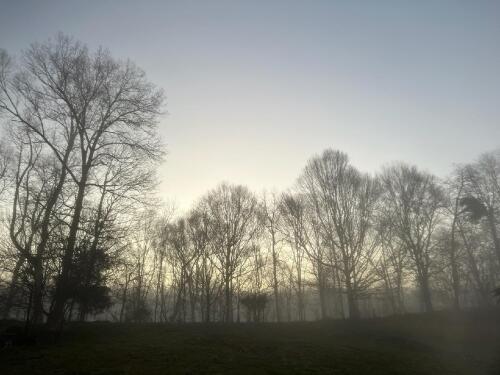by Louisa Wells, Virginia
The trees in my backyard look spectacular, robed in either their spring blossoms or their fall foliage. During the summer, their green canopy offers shade and safety to all kinds of critters. In winter, though, they are bare and some might say unattractive. Why do you think our artistic Heavenly Father and His creative son, Jesus Christ, gave trees a season of starkness, and what can we learn from them to help our homeschool during the cold months of January and February?
I’m sure you’ll discover many of your own lessons, but here are three I’ve noticed:
1) In the winter, trees slow down and conserve energy. Rather than trying to bloom all year, trees stop growing and slow down all internal processes.
As parents, we sometimes think that we and our children need to be “blooming” all year long. When we get to January and the cold and dark makes us want to hibernate, we worry about the things we aren’t getting done. If we were to learn from trees, perhaps we would slow down and embrace that this season is different from other times of the year.
This looks different for every family, and some people’s “slow” looks like other families’ “fast” speed. Consequently, we have to try extra hard at this time of the year to not compare ourselves to those around us. It’s easy to fall into comparisons and destroy our own peace.
2) In addition, trees let go of their leaves, which are not blessing them in this season. In fact, because leaves initiate the transpiration (or release) of water, they would literally cause the tree to dehydrate and die if they were kept during the winter when replacement water is not easily available.
As homeschoolers, it is normal and relatively frequent to pick out a curriculum that doesn’t end up working as well as we had expected. It is ok to let these go, even if we spent money on them- after all, the money is gone either way.
I will caution, though, that sometimes we think the curriculum is the problem when actually it is our own discipline that is lacking. Especially during November and December, we might slack off on something and then think it doesn’t work. If the real problem is that we haven’t given something enough effort, it might be worth giving it a second chance. However, if our lack of effort signifies an underlying disinterest, we may still need to let it go.
How do you know the difference? Trust your judgment! You have the Holy Ghost to help you.
3) Once metabolism is slowed and leaves are discarded, trees devote much of their remaining cellular energy to preventing freezing; in fact, they actually generate their own anti-freeze proteins. This miraculous process exceeds the self-care demanded during other seasons, and could, perhaps, be called a counter-attack on Old Man Winter.
Like trees, we also need to mount a counter-attack in January and February, not against winter but against negative emotions. Our need for positive self-talk during the winter months exceeds the other seasons of the year, so we must begin generating our own “anti-freeze” for our paralyzing negative thoughts.
We need to practice identifying and disputing negative messages such as “you are too fat,” and “you’re not doing good enough,” which tend to creep into our minds extra frequently at this time of year. Those vague criticisms come from the devil, and we must recognize them, stop them, and question their validity and truth.
On the other hand, our Savior Jesus Christ leads us with kind and compassionate messages such as, “Your body is amazing, and you are beautiful just how you are,” and “You are doing your best and learning and growing each day.” After all, surely the God who filled the earth with diverse creations must love each of us exactly as we are. We can trust His voice to lead us to truth as He has done for generations before us.
If we will use January and February to slow down, let go of things that don’t serve us, and learn to speak more compassionately to ourselves, then we will find ourselves ready to bloom in a different season. What other lessons can YOU learn from trees this winter?
Louisa Wells is the mother of 9 children. She started homeschooling when her oldest was in kindergarten, figuring she couldn’t mess that up TOO badly. Now, after 15 years, she thinks it’s a beautiful way to live and plans to continue forever. She lives in Virginia.


